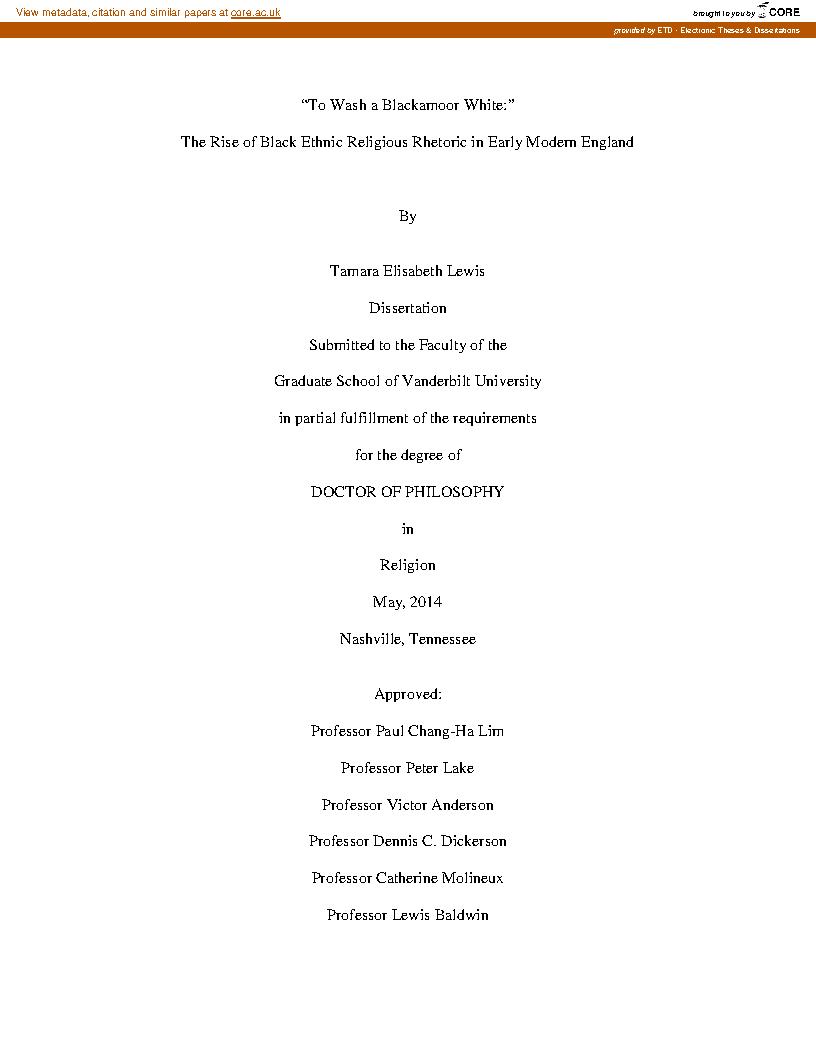5573_04.png






QUIPUS-ARSENALES DE LA MEMORIA - Christian Sauer
La confección de cordones anudados para ayudar a la memoria estaba muy extendida en muchas regiones del mundo y aún hoy se practica en algunos casos; incluso en el contexto europeo moderno, el famoso nudo de un pañuelo resulta familiar a casi todo el mundo como la forma más sencilla de anudado textil. Una técnica mucho más sofisticada de dispositivos mnemotécnicos se oculta tras los quipus andinos (quechua: 'nudos'), en su día los instrumentos más importantes para registrar y administrar el antiguo imperio inca del Tawantinsuyu.
A un cordón principal, cuya longitud puede variar considerablemente, se atan varios cordones longitudinales (colgantes) entrelazados con nudos en distintos puntos y a diferentes distancias del cordón principal, que designan determinadas categorías de un sistema decimal. Éstos se completan con otros cordones auxiliares, en los que a su vez pueden registrarse subcategorías de los niveles de orden registrados en los cordones longitudinales. Dependiendo de la posición vertical y horizontal en esta disposición, de la longitud del hilo y del tipo de nudo que se haga en la cuerda, estos nudos tienen distintos significados.
Sin embargo, una representación de valores puramente numéricos tendría poco sentido si el objeto de los números de la cadena no estuviera también codificado. Esto se consigue mediante una coloración diferente de las cadenas, que en parte es análoga a las cosas que hay que representar, pero en la que también pueden manifestarse relaciones categóricas abstractas.
En el caso más sencillo, una simple cuerda de color puede referirse de forma bastante viva a cosas que deben registrarse en consecuencia: blanco para el metal o la plata, amarillo para la tierra o el oro, verde para el árbol o la madera, etc. Si una coloración blanca ("metal") se superpone a otra verde ("madera"), se habla en sentido figurado de una "victoria del metal sobre la madera", en el sentido fáctico de talar y cortar madera. Otras combinaciones de colores también pueden designar contextos religiosos de significado; una coloración azul-amarilla-blanca, por ejemplo, marca la fiesta inca del sol Intiraymi.
Las posibilidades de variación de color surgen del número, la forma y la dirección en que se retuercen los cordones para formar un nuevo cordón, por lo que un mismo cordón puede adoptar varios tonos de color. Si combinamos estas posibilidades de codificación semántica con el carácter estadístico-numérico de los arreglos de nudos, podemos imaginar fácilmente que los quipus proporcionan información muy concreta sobre todo tipo de actividades culturales.
¿¿?¿ La función esencial de los quipus era recordar el contenido memorizado de los discursos transmitidos oralmente aplicando convenciones de descodificación acordadas culturalmente. Sin embargo, la descodificación y reconstrucción de los contenidos fijados en las puertas nodales estaba reservada a una casta de especialistas, los quipucamayocs, encargados específicamente de ello. Cómo se entrelazaba realmente esta "llave oral" con las estructuras de los Quipus sigue siendo un misterio sin resolver.
También cabe suponer que, a pesar de su compleja función mnemotécnica, los quipus sólo pueden
función, los quipus sólo eran capaces de captar todo lo que se podía contar de alguna forma. Por tanto, también hay que considerar los límites de la fijabilidad de la información y los contenidos a través de cuerdas anudadas.
Los quipus son sólo un ejemplo de los muchos tipos de "textos" no alfabéticos que sólo gradualmente se están incluyendo en un marco más amplio de consideración de los sistemas escritos o similares a las escrituras. Como ayudas para la memoria, apoyan principalmente la transmisión oral de conocimientos culturales y representan una posible variante para el almacenamiento externo de la memoria. Su función social como
Su función social como portadores de la memoria cultural dentro de su contexto social es comparable a la función de los libros en la cultura escrita occidental.
Christian Sauer
DISCOVER MAGAZINE 2017
The Inka Empire Recorded Their World In Knotted Cords Called Khipu. The great South American civilization used complex knots and fibers for record-keeping and communication (2017): Zitieren und Belegen von Literatur in wissenschaftlichen Arbeiten. <http://discovermagazine.com/2017/oct/unraveling-a-secret> (17.10.2019).
High in the Peruvian Andes, in the remote village of San Juan de Collata, sits a wooden box that’s sacred to the locals who keep close guard over it. It contains 487 cords of twisted and dyed animal fibers that, according to its caretakers, encode messages planning an 18th-century rebellion.
Anthropologist Sabine Hyland was invited by community members to study the strings — the first outsider permitted to view them — but only for 48 hours and under constant supervision.
Although no one alive today can decipher the cords, their general message and significance has been passed down orally for generations. Hyland was told by a village elder, “If we could read what is in here, we would know for the first time who we truly are.”
The strings are khipus, devices invented by indigenous Andeans to store information. Khipus are mostly known by archaeologists as the records of the Inka civilization, the vast multiethnic empire that encompassed as many as 18 million people and nearly 3,000 miles along the Andes and the Pacific coast of South America. Builders of the spectacular mountain fortress of Machu Picchu, the Inka ruled from the early 1400s until the Spanish conquest began in 1532.
According to Spanish chroniclers, the Inka did not write; instead, they tied information into khipus, which documented all matters of affairs: tributes, censuses, calendars, laws, rituals and narrative histories. But no Spaniards bothered to chronicle how information was encoded into strings, and so the records of the Inka lay unread, tied up in some 950 surviving khipus, scattered around the world in museums and other collections.
This could change, thanks to insights gleaned from the Collata khipus and several others recently discovered in villages and through archaeological excavations.
“I very much believe that within my lifetime, we’ll be able to interpret khipus,” says Hyland, who is based at the University of St. Andrews in Scotland. “I don’t think it’s going to be easy.”
More Than Memory Aids
The traditional khipu system was fairly standard. There is a primary top cord, to which pendant cords are tied. The pendant cords may be tied with subsidiary cords, which may be tied with more subsidiary cords, and so on. The most elaborate khipus, which could be census records of annual tributes owed to Inka lords, contain upward of 1,500 pendants dangling from the primary cord and six levels of subsidiaries branching from the pendants. Other khipus are just a few strings, made by herders to keep stock of grazing animals.
More than a century ago, Leslie Leland Locke, a historian of mathematics, determined how knots on the cords represent numbers in a base-10 decimal system. For example, the number 385 would be coded by 3 linked knots, followed by a space, then 8 linked knots, a space, and then a special long knot, used only for numbers 2 through 9, with 5 turns to express the number 5.
This is the one aspect of the khipu code that has been deciphered — and many scholars believe it is the only aspect to decipher. The traditional view among archaeologists is that khipus kept numerical data and were memory aids, like rosary beads. Anyone could read the numbers, but what a khipu counted would be known only by its maker.
But there are clues that khipus contain much more information. Some don’t have knots, and some have cords that vary by fiber type and color. Moreover, Spanish colonial documents indicate that khipus recorded laws, rituals and history. And discovering such greater complexity hidden in the khipus would help answer a long-simmering question: How could the Inka manage a vast, bureaucratic empire without a proper writing system?
Ancient Binary Code
Gary Urton, considered the foremost authority on khipus, is convinced the cords were more than memory aids. The Harvard anthropologist, who has studied the strings for 25 years, introduces himself as “one of the two or three people in the world who actually spend their entire time fretting about the khipus. . . these devices that look like knotted mops.”
He has shaggy, gray bangs, rectangular glasses and the demeanor of a hippie absorbed in serious philosophical pondering. Urton admits that his obsession with khipus may stem from his severe childhood stutter, which made him feel like thoughts were trapped inside him, just as Inka records are trapped in their cords. That, and the fact that he quit Cub Scouts because he couldn’t master knot tying.
According to Urton, khipus were a standardized way of recording specific ideas in permanent signs: in other words, a writing system.
He has methodically analyzed about 650 khipus, documenting every cord and knot, as well as more subtle details such as patterns of spacing and color, ply (the direction a cord twists) and knot orientation (S-knots cross the string left to right; Z-knots cross right to left).
“Either the whole damn thing is just a riot of idiosyncratic knotting and tying and colors, or there’s some order to it,” he says.
In 2003, Urton proposed a model for this order, arguing that khipus recorded information using an ancient binary code. Just as computers can encode anything through sequences of 0s and 1s, the khipu symbolized ideas through features of the strings that are inherently binary, such as the S or Z knots, clockwise or counterclockwise ply, and fibers of cotton or animal fiber. At the time, Urton identified seven binary features, which would allow for 128 distinct signs. Including different colors would make over 1,000 signs. He did not think the system was alphabetic, with signs representing sounds. Rather, he saw it as semasiographic: Signs had meanings, similar to musical notes and mathematical symbols.
The theory was certainly provocative, and contested. “Any individual element he identifies could be significant in a khipu, or it might not be,” says Galen Brokaw, a scholar of the Latin American and Latino Studies department at Montana State University. Brokaw has written the comprehensive book A History of the Khipu based on archaeological evidence and colonial-era manuscripts that mention the devices. Although individual texts can be misleading, by considering all the sources together, you can get closer to the real story, he says.
And there was no direct evidence in these sources or elsewhere to support Urton’s binary code idea — at least not back when he first proposed it.
Khipus in the Mountains
Urton’s model comes from patterns observed in the khipus, influenced by ethnographic research. He’s spent years living in Andean villages, learning how the people view the world, how they classify things and organize society. His unique insights, says Hyland, are the result of “his very deep knowledge and understanding of Andean culture and just having looked at so many khipus for so long.”
Still, she would read his ideas and think, “Yeah, maybe he’s right, maybe he’s wrong, who knows.” There was no way to check the claims. As far as any scholars knew, the last people to read khipus were ancient history.
Then in the mid-’90s, Frank Salomon, an anthropologist at the University of Wisconsin-Madison, discovered khipus in Peru’s rural Huarochirí province, about 60 miles from bustling Lima but over 10,000 feet higher in the mountains and a world away in terms of lifestyle. In addition to using alphabetic writing, people in Huarochirí were recording information with Inka-style khipus into the 20th century. The last khipu experts died a couple of generations ago, but villagers today recall aspects of how the devices worked.
Salomon says he was “floored because at that time, khipus were known primarily as archaeological objects and not anything that is part of our modernity.”
Since then, he and Hyland have found more khipus in other Andean villages. Unlike the ancient specimens in museums, these are associated with living memories and written documents, which provide clues to deciphering them.
And the cords appear to support Urton’s theory. “I’m studying these khipus, and I don’t know how many times I said to myself, ‘Oh shit, Gary was right,’ ” says Hyland.
For example, Urton knew that Andean people classify things into pairs of higher and lower value, such as milking cows versus dry cows, or labor done by men versus women. (Sorry, fellow women; in some villages, our work is worth only half that of men.) Observing patterns of knot direction on ancient khipus, he hypothesized that S- and Z-knots indicated the higher- and lower-ranked components of a pair.
Hyland found this to be true for a khipu board, a device used by post-colonial Andeans familiar with both letters and strings. Khipu boards listed names in alphabetic script; each written name was accompanied by a cord representing that person’s fulfillment of community and religious obligations, such as attending a ritual or participating in the annual village-wide task of cleaning an irrigation canal.
Hyland studied a board that dates back to the 1800s. Although many names were faded by bat urine and dirt, she was able to read most through a camera that combines visible, ultraviolet and infrared light, revealing trace pigments that can’t be seen by the human eye. Then, working with the four oldest community members, she assigned the names to social groups. Among the identifiable names, those with S-knots belonged to one social group, those with Z-knots to another.
In another case, Hyland found archival notes from an interview in 1935 between an archaeologist and a local khipu expert. She was able to compare this testimony with the actual khipus discussed, now in a Lima museum, and to further question the expert’s grandson, who still resides in Huarochirí.
The results confirmed that individual data, such as the goods or services of a single person, were represented by color banding along the primary cord: a series of pendants in one color, followed by a series of pendants of another color. Aggregated data — for example, a summary accounting for a whole village — were denoted by a primary cord with a different color pattern: a single pendant of one color, followed by a single pendant of another color, and so on.
Phonetic Potential
However, Hyland’s most recent research into the Collata khipus suggests the cords may do something that Urton did not anticipate: They may symbolize sounds.
The two Collata khipus have strings of 14 colors, made from six different animals, including alpaca, llama and vizcacha, a rabbit-like rodent. Combinations of color, fiber and ply create 95 distinct symbols. That number is within the range of logosyllabic writing systems, which use signs to represent both sounds and full words, such as Japanese kanji.
Hyland believes, based on discussions with community members as well as colonial manuscripts in the same box, that these khipus were messages between Collata and the nearby village of Casta about their revolt against the Spanish in the late 1700s. Andeans likely used khipus at that time to ensure that Spanish authorities could not intercept their communications.
As messages, these khipus probably end with the names of the senders. According to the villagers, one of the khipus was created by the Alluka lineage. Relating the sounds in this name to variables in the final strings, Hyland proposed a phonetic decipherment of it. For instance, she hypothesized that the final “ka” sound is represented by a blue S-ply cord of llama wool. The correlation makes sense because ankas was the regional dialect word for blue.
Astonishingly, when she applied this phonetic code to the final strings of the second khipu, they read Yakapar — the name of one of the only two family lineages in Casta.
“If they’re phonetic, that raises a whole new realm of possibility,” says Hyland.
Digging Up Context
It’s unclear how far back Hyland’s findings can be pushed. Phonetic signs in the Collata khipus may have ancient roots — or they could be a modern innovation by post-colonial Andeans who, aware of alphabetic scripts, added phonetic signs to the traditional cord system.
The same is true for anything discerned from recent khipus. Like all writing systems, the khipu code would not have been static; it would have evolved across time, space and function. A khipu chronicling imperial history, for example, may have used different conventions than one counting a herder’s llamas. Shakespeare wrote differently than bards in the Twitterverse.
“Even if you figure out what one khipu means, that is going to tell you what that khipu means in that context,” cautions Brokaw. It won’t necessarily give you the key to reading all strings.
To understand Inka khipus, researchers need khipus from Inka contexts, associated with clues to indicate how they were used. Most ancient khipus were obtained by looters and sold to collectors without details concerning where they were from or what else was with them. Those recovered by archaeologists have primarily been from burials, not in their normal places of daily use.
This changed in 2013, when Peruvian archaeologist Alejandro Chu started uncovering dozens of khipus at the site of Inkawasi, an Inka military post, storage facility and administrative center on the southern coast of Peru. The most extraordinary part: Some khipus were discovered with particular food items. One was buried with black beans, two were in a basket with chili peppers, and 14 khipus were covered with peanuts. It is the first time khipus have been found in the context where they were used.
The First Inka History
As excavations at Inkawasi continue, the associations between strings and things add a missing dimension to our understanding of khipus: how the Inka used them before the Spanish arrived. By combining this archaeological evidence with the colonial written sources, more recent khipus and indigenous knowledge, researchers are learning more about — and from — the cords than ever before.
In his newest book, Inka History in Knots, published in April, Urton interprets khipus to describe a two-year calendar of labor assignments, a census reporting the social status of groups in a village, and bean counting (literally) at Inkawasi. The information is as lively as tax returns, but it is the first Inka history from Inka records.
“All our understanding of the Inkas and their empire is filtered through the minds of 16th-century Spaniards,” says Urton. “My intention is to work with the khipus and let the Inka speak for themselves.”
Editor's Note: What happened to the Inca Empire? Most scholars now prefer Inka, a spelling that better reflects its roots in the indigenous Quechua language.
https://www.documenta14.de/de/artists/13557/cecilia-vicuna
Cecilia Vicuña

Cecilia Vicuña, Quipu Mapocho (2016), verschiedene Materialien, u. a. ungesponnene Wolle, Zweige, Schnur, ca. 2 × 1,5 × 1,5 m, Performance, Llolleo, Chile, courtesy Cecilia Vicuña und Englund & Co. Gallery, London

Cecilia Vicuña, Quipu Womb (The Story of the Red Thread, Athens), 2017, gefärbte Wolle, Installationsansicht, EMST – Nationales Museum für Zeitgenössische Kunst, Athen, documenta 14, Foto: Mathias Völzke
Werke
Cecilia Vicuña
(geb. 1948, Santiago de Chile)
Quipu Womb (The Story of the Red Thread, Athens) (2017)
Gefärbte Wolle
Ca. 6 × 8 m
EMST – Nationales Museum für Zeitgenössische Kunst, Athen
A Ritual Performance by the Sea (2017)
Küste, Athen
Karl Marx (1972)
Öl auf Leinwand
92,1 × 71,7 cm
Lenin (1972)
Öl auf Leinwand
56,5 × 51,4 cm
Angel de la Menstruación (Menstruationsengel, 1973)
Öl auf Leinwand
57,8 × 48,3 cm
Sammlung Catherine Petitgas, London
Fidel y Allende (1972)
Öl auf Leinwand (Ausstellungskopie)
72 × 59 cm
Muerte de Allende (Tod von Allende, 1973)
Öl auf Leinwand
57,1 × 40 cm
Violeta Parra (1973)
Öl auf Leinwand (Ausstellungskopie)
57,8 × 48,3 cm
Gabriela Mistral (1986)
Öl auf Leinwand
61 × 49 cm
Maria Sabina (1986)
Öl auf Leinwand
59,7 × 49,5 cm
Alle Werke Neue Galerie, Kassel
Quipu Gut (2017)
Gefärbte Wolle
Maße variabel
documenta Halle, Kassel
Ritual Performance (2017)
Performance
documenta Halle, Kassel
In ihrer nordamerikanischen Wahlheimat – die Künstlerin lebt seit den 1980er Jahren in New York – ist Cecilia Vicuña in erster Linie für ihr dichterisches Werk bekannt. Dennoch ist sie der Berufung ihrer Jugendzeit treu geblieben und arbeitet seit mehr als vierzig Jahren als bildende Künstlerin in unterschiedlichsten Genres. Ihre ortsspezifischen Projekte sind Ausdruck ihrer Gabe, räumliche Gedichte zu komponieren, empfindsame, gefühlsbetonte Lyrik in drei Dimensionen. Vicuña bezeichnet diese speziellen Arbeiten als „quipoems“ – eine Verschmelzung von „poem“ (englisch für „Gedicht“) und „Quipu“. Letzteres wird in einem Online-Wörterbuch wie folgt definiert: „Aus einer Schnur bestehende Vorrichtung, an der mit Knoten versehene Fäden unterschiedlicher Farbe befestigt sind; diente im alten Peru zum Aufzeichnen von Ereignissen, zur Buchführung etc.“ Eine präkolumbische Art des Schreibens also, Frucht einer literarischen Tradition, der die Welt Dichtergrößen wie Gabriela Mistral, Pablo Neruda und Nicanor Parra verdankt. Vicuña, 1948 in Santiago de Chile geboren, ist sich der Bedeutung indigener Geschichte als Fundament für die lateinamerikanische Kultur des 20. Jahrhunderts in höchstem Maße bewusst.
Ihr aktuelles „quipoem“ in Athen in Form einer immersiven „weichen Skulptur“ in Übergröße besteht aus riesigen Fäden ungesponnener Wolle. Letztere wurde von einem lokalen Lieferanten bezogen und auffallend purpurrot gefärbt – zu Ehren einer synkretistischen religiösen Tradition, die durch die Nabelschnur menstrueller Symbolik die Muttergottheiten der Andenregion mit den maritimen Mythologien des alten Griechenland verknüpft.
Vicuñas frühe figurative Gemälde, entstanden zu Beginn der 70er Jahre, stellen die Porträts von Dichterinnen (unter anderen Mistral) einer Phalanx aus männlichen Politikheroen (unter anderen Karl Marx, Lenin, Fidel Castro und Chiles Salvador Allende) gegenüber. Deren unbeugsame Männlichkeit wird durch den für die Künstlerin typischen Pop-Stil auf amüsante Weise unterlaufen. Beispiele sind die heiligenscheinähnliche Blumengirlande rund um Marx’ Kopf oder die merkwürdige, an Genitalien gemahnende Symbolik in der surrealen Landschaft hinter Lenin. Diese Porträts, 1972 gemalt, wirken heute wie wehmütige Erinnerungen an einen vorzeitig beendeten utopischen Augenblick: Im Jahr darauf setzte ein von der CIA unterstützter und von Pinochet angeführter Militärputsch einen blutigen Schlussstrich unter Allendes sozialistisches Experiment. Diese Ereignisse zwangen auch Cecilia Vicuña in ein Exil – erst nach London und Kolumbien, dann nach New York –, aus dem die Künstlerin nie mehr wirklich heimgekehrt ist.
— Dieter Roelstraete
Gepostet in Öffentliche Ausstellung
Auszug aus dem documenta 14: Daybo
https://www.documenta14.de/de/calendar/19155/open-day
MAI
2
Gespräch
17 Uhr
Hochschule der Bildenden Künste Athen (ASFA) – Pireos-Straße („Nikos-Kessanlis“-Ausstellungshalle), Pireos 256, Athen
Zum iCal oder Google Calendar hinfügen
Ein Gespräch in der von Aristide Antonas gestalteten "Alten Bibliothek" als einem performativen Raum der Bildung und Begegnung. Cecilia Vicuña befasst sich mit alten und ursprünglichen Ritualen als mögliches Modell für die Zukunft und für die kollektive Produktion.
https://www.documenta14.de/de/calendar/16501/beach-ritual
APR
10
Performance
18–20 Uhr
Küste, Athen
Zum iCal oder Google Calendar hinfügen
Diese Performance ist integraler Bestandteil von Cecilia Vicuñas Beitrag zur documenta 14 – ein Opfer am Meeresufer, wobei sie dieselbe griechische Wolle benutzt, die sie schon bei der Herstellung ihrer „quipu“-Installation am EMST– Nationales Museum für Zeigenössische Kunst verwendet hat.
(South as a State of Mind Issue #8, documenta 14, #3)
https://www.documenta14.de/de/south/904_language_is_migrant
Language Is Migrant
Von Cecilia Vicuña
Language is migrant. Words move from language to language, from culture to culture, from mouth to mouth. Our bodies are migrants; cells and bacteria are migrants too. Even galaxies migrate.
What is then this talk against migrants? It can only be talk against ourselves, against life itself.
Twenty years ago, I opened up the word “migrant,” seeing in it a dangerous mix of Latin and Germanic roots. I imagined “migrant” was probably composed of mei, Latin for “to change or move,” and gra, “heart” from the Germanic kerd. Thus, “migrant” became “changed heart,”
a heart in pain,
changing the heart of the earth.
The word “immigrant” says, “grant me life.”
“Grant” means “to allow, to have,” and is related to an ancient Proto-Indo-European root: dhe, the mother of “deed” and “law.” So too, sacerdos, performer of sacred rites.
What is the rite performed by millions of people displaced and seeking safe haven around the world? Letting us see our own indifference, our complicity in the ongoing wars?
Is their pain powerful enough to allow us to change our hearts? To see our part in it?
I “wounder,” said Margarita, my immigrant friend, mixing up wondering and wounding, a perfect embodiment of our true condition!
Vicente Huidobro said, “Open your mouth to receive the host of the wounded word.”
The wound is an eye. Can we look into its eyes?
my specialty is not feeling, just
looking, so I say:
(the word is a hard look.)
—Rosario Castellanos
I don’t see with my eyes: words
are my eyes.
—Octavio Paz
In l980, I was in exile in Bogotá, where I was working on my “Palabrarmas” project, a way of opening words to see what they have to say. My early life as a poet was guided by a line from Novalis: “Poetry is the original religion of mankind.” Living in the violent city of Bogotá, I wanted to see if anybody shared this view, so I set out with a camera and a team of volunteers to interview people in the street. I asked everybody I met, “What is Poetry to you?” and I got great answers from beggars, prostitutes, and policemen alike. But the best was, “Que prosiga,” “That it may go on”—how can I translate the subjunctive, the most beautiful tiempo verbal (time inside the verb) of the Spanish language? “Subjunctive” means “next to” but under the power of the unknown. It is a future potential subjected to unforeseen conditions, and that matches exactly the quantum definition of emergent properties.
If you google the subjunctive you will find it described as a “mood,” as if a verbal tense could feel: “The subjunctive mood is the verb form used to express a wish, a suggestion, a command, or a condition that is contrary to fact.” Or “the ‘present’ subjunctive is the bare form of a verb (that is, a verb with no ending).”
I loved that! A never-ending image of a naked verb! The man who passed by as a shadow in my film saying “Que prosiga” was on camera only for a second, yet he expressed in two words the utter precision of Indigenous oral culture.
People watching the film today can’t believe it was not scripted, because in thirty-six years we seem to have forgotten the art of complex conversation. In the film people in the street improvise responses on the spot, displaying an awareness of language that seems to be missing today. I wounder, how did it change? And my heart says it must be fear, the ocean of lies we live in, under a continuous stream of doublespeak by the violent powers that rule us. Living under dictatorship, the first thing that disappears is playful speech, the fun and freedom of saying what you really think. Complex public conversation goes extinct, and along with it, the many species we are causing to disappear as we speak.
The word “species” comes from the Latin speciēs, “a seeing.” Maybe we are losing species and languages, our joy, because we don’t wish to see what we are doing.
Not seeing the seeing in words, we numb our senses.
I hear a “low continuous humming sound” of “unmanned aerial vehicles,” the drones we send out into the world carrying our killing thoughts.
Drones are the ultimate expression of our disconnect with words, our ability to speak without feeling the effect or consequences of our words.
“Words are acts,” said Paz.
Our words are becoming drones, flying robots. Are we becoming desensitized by not feeling them as acts? I am thinking not just of the victims but also of the perpetrators, the drone operators. Tonje Hessen Schei, director of the film Drone, speaks of how children are being trained to kill by video games: “War is made to look fun, killing is made to look cool. ... I think this ‘militainment’ has a huge cost,” not just for the young soldiers who operate them but for society as a whole. Her trailer opens with these words by a former aide to Colin Powell in the Bush/Cheney administration:
OUR POTENTIAL COLLECTIVE FUTURE. WATCH IT AND WEEP FOR US. OR WATCH IT AND DETERMINE TO CHANGE THAT FUTURE
—Lawrence Wilkerson, Colonel U.S. Army (retired)
In Astro Noise, the exhibition by Laura Poitras at the Whitney Museum of American Art, the language of surveillance migrates into poetry and art. We lie in a collective bed watching the night sky crisscrossed by drones. The search for matching patterns, the algorithms used to liquidate humanity with drones, is turned around to reveal the workings of the system. And, we are being surveyed as we survey the show! A new kind of visual poetry connecting our bodies to the real fight for the soul of this Earth emerges, and we come out woundering: Are we going to dehumanize ourselves to the point where Earth itself will dream our end?
The fight is on everywhere, and this may be the only beauty of our times. The Quechua speakers of Peru say, “beauty is the struggle.”
Maybe darkness will become the source of light. (Life regenerates in the dark.)
I see the poet/translator as the person who goes into the dark, seeking the “other” in him/herself, what we don’t wish to see, as if this act could reveal what the world keeps hidden.
Eduardo Kohn, in his book How Forests Think: Toward an Anthropology Beyond the Human notes the creation of a new verb by the Quichua speakers of Ecuador: riparana means “darse cuenta,” “to realize or to be aware.” The verb is a Quichuan transfiguration of the Spanish reparar, “to observe, sense, and repair.” As if awareness itself, the simple act of observing, had the power to heal.
I see the invention of such verbs as true poetry, as a possible path or a way out of the destruction we are causing.
When I am asked about the role of the poet in our times, I only question: Are we a “listening post,” composing an impossible “survival guide,” as Paul Chan has said? Or are we going silent in the face of our own destruction?
Subcomandante Marcos, the Zapatista guerrilla, transcribes the words of El Viejo Antonio, an Indian sage: “The gods went looking for silence to reorient themselves, but found it nowhere.” That nowhere is our place now, that’s why we need to translate language into itself so that IT sees our awareness.
Language is the translator. Could it translate us to a place within where we cease to tolerate injustice and the destruction of life?
Life is language. “When we speak, life speaks,” says the Kaushitaki Upanishad.
Awareness creates itself looking at itself.
It is transient and eternal at the same time.
Todo migra. Let’s migrate to the “wounderment” of our lives, to poetry itself.
https://www.hessenschau.de/documenta360/#pano=581


https://www.brooklynmuseum.org/exhibitions/cecilia_vicuna

Cecilia Vicuña: Disappeared Quipu
May 18–November 25, 2018
For millennia, ancient peoples of the Andes created quipus—complex record-keeping devices, made of knotted cords, that served as an essential medium for reading and writing, registering and remembering. New York–based Chilean artist and poet Cecilia Vicuña has devoted a significant part of her artistic practice to studying, interpreting, and reactivating the quipus, which were banned by the Spanish during their colonization of South America. Drawing on her indigenous heritage, Vicuña channels this ancient, sensorial mode of communication into immersive installations and participatory performances.
Disappeared Quipu pairs ancient quipus from our collection with a newly commissioned installation by Vicuña that combines monumental strands of knotted wool with a four-channel video projection. Together, these quipus of the past and present explore the nature of language and memory, the resilience of native people in the face of colonial repression, and Vicuña’s own experiences living in exile from her native Chile. Each knot of Vicuña’s modern-day quipus gives radical possibility to the connective and expressive capacities of a language nearly lost to history.
On view in the adjacent gallery are thirteen ancient Andean textiles selected by Vicuña from our collection. Featured in the artist’s video projection, these textiles span a period of fourteen hundred years and complement Vicuña’s installation by honoring an important indigenous artistic tradition.
Cecilia Vicuña: Disappeared Quipu is organized by the Brooklyn Museum and the Museum of Fine Arts, Boston. The Brooklyn presentation is initiated by the Elizabeth A. Sackler Center for Feminist Art, and is organized by Catherine Morris, Sackler Senior Curator for the Elizabeth A. Sackler Center for Feminist Art, and Nancy Rosoff, Andrew W. Mellon Senior Curator, Arts of the Americas, with Serda Yalkin, Curatorial Assistant, Arts of the Americas and Europe. The MFA presentation is organized by Liz Munsell, Lorraine and Alan Bressler Curator of Contemporary Art, and Dennis Carr, Carolyn and Peter Lynch Curator of American Decorative Arts and Sculpture. Gary Urton, Dumbarton Oaks Professor of Pre‐Columbian Studies at Harvard University, is a collaborative consultant to the project. Robert Kolodny and Ricardo Gallo respectively, created the video projection and sound design of the work.
Leadership support is provided by Elizabeth A. Sackler. Generous support is provided by the Horace W. Goldsmith Foundation and the Kaleta A. Doolin Foundation.



This administrative quipu, which consists of three different quipus attached along the primary cord, was used to record statistical information, such as taxes, census data, and storehouse inventories.
Administrative quipus are characterized by pendant cords with tiers of knots separated by spaces that indicate decimal values—what we would understand as the individual columns of digits in a numbering system, such as units (1 through 9), tens, hundreds, and thousands. The twist direction of the cords is almost always Z-spun and S-plied. The Inca used three main knots (visible on this quipu) to signify numerical values: figure-eight knots, long knots, and single knots. Each knot type signified a different unit of measurement.
Cord color also had significance; however, its meaning is at present unknown. The plain white, reddish-brown, and tan cords on the right are blanks for future use.

Key questions:
- What role does the symbolism of textile practices, colors, fibers and the process of quipu creation play in the coded information?
- How can the materiality of quipus (in its diversity) contribute to understand the quipu as a cultural artifact?
Quipus are a textile artifact for recording information used in several Andean cultures (within the Inca empire, during the colonial era, later and to the present day).
It is a textile artifact composed of a main rope from which more ropes with knots are detached from which in turn more ropes can be detached generating subcategories. These textile pieces were made of cotton fiber, alpaca and other animals (put which) and with different colorations, dyes from plants and animals.
The dominant research and historiographic work on quipus, as an artifact of codification and representation of information, have been marked by an interest in discovering their codification as a universal system that includes all types of quipu. They have been interpreted as a way of recording figures closely linked to state tasks, accounts and censuses of the Inca empire, which has been corroborated by comparing information from colonial-era records such as chronicles and illustrations of Spaniards.
However, some research (most notably the work of Marcia Ascher, Robert Ascher, Sabine Hyland) has proposed that the writing system of the quipus is contextual and adaptable to different meaning systems. In other words, that each quipu or series of quipu has its own coding system, where, variables such as the shape of the knots, the direction of the twists of the spinning and folding/picking, the colors, the way of attaching the strings to the main string and so on, would have a specific function for each context of each quipu.
Robert Ascher states that the quipu writing system is conceptual and that to decipher it “one would ultimately have to grasp several of the meaning systems of the culture using the writing” because quipus do not have an all-encompassing resolution. Especially, when assuming that this artifact was used for different tasks, such as recording numbers, stories, rituals, myths, tributes, laws, calendars. For example, in San Juan de Collata, Peru, there remains a quipu in the community that functioned as a means of communication between two communities that planned a rebellion against the colonial system (see: Sabine Hyland - unraveling an Ancient code written in strings), this quipu contains fibers of 5 different animals and different colors.
Within the meaning systems of Andean cultures, it is worth highlighting the symbolic, ritualistic and cosmogonic meanings.
The quipu can be understood as a technological object that represents a complex system of organization and codification of information and knowledge, where the symbolic affiliations with the materials and processes of textile work (spinning, colors, dyeing, etc.) would be inseparable from the codified contents/information.
Unraveling the Hero’s Journey
The aim of my project is to retrace the lines of extraction, following objects in the collection to their point of origin. The work will not only be an object oriented geography, but rather a critical look at ownership and colonial conquest.
The creators of the objects themselves are erased, disconnected from the artifact. What remains is the object and the story maintained by the “collector,” typically a white male colonial figure.
What is the role of the “collector” who so generously donated all these precious objects to museums?
Why were the material cultures of the Global South considered unreal until they pass through white hands and are rendered through the white graze?
Beginning with the character of Max von Oppenheim Collection whose foundation has donated a vast amount of artifacts from the African continent to RJM, we begin to unwind and problematize his role in the archive through a method of “critical fabulation”.
Critical Fabulation, a term coined by Sadiya Hartman is defined as a method f “combining of historical and archival research with critical theory and fictional narrative to fill in the blanks left in the historical record. It is both a fleshing out and a problematizing of history and is ultimately as gratifying and frustrating as it sounds.”
Essentially a rich banker turned adventurer, Oppenheim’s legacy as a brave discoverer and worldly scholar is maintained by the foundation after death.
4A360A8E-9F62-49B3-BADA-9C68A17F273E.jpeg
According to the Max Von Oppenheim Foundation’s website, Oppenheim is praised with “Building Bridges between Orient and Occident.”
This framing of his character as “hero” can be deconstructed through a critical lens where Orientalism can be witnessed as a colonial worldview, that of conquest and exploitation rather than innocent discovery.
By retracing the collection objects through a satirical version of Oppenheim’s “hero-arc” or “hero-journey” we can create fractures in the archive so it can leak out into the world in messy ways!
Terms:
Critical Fabulation
Hero’s Journey
Columbusing - an Internet slang term used to describe the act of white people appropriating non-white culture for themselves without recognizing its true origins. The term is named after the Italian explorer Christopher Columbus, who was credited with discovering the Americas while it was already inhabited by indigenous people.
3C9C038A-9B16-4DB3-9270-3068D7DDDB36.jpegBiography of Oppenheim from foundation’s website:
“Max von Oppenheim was born on 15 July 1860 in Cologne. His father Albert was the head of Sal. Oppenheim jr. & Cie., a respected private banking institution founded in 1789. The family played a leading role as a generous donor and patron; its professional ethos, cosmopolitanism, and love of art and culture played a decisive role in the development of Max’s character and world view.
As a matter of course, Oppenheim’s upbringing pursued the aim of succeeding his father at the bank. But Max imagined a different future. Having read “Thousand and One Nights” as a boy and devoured the popular travel accounts of German scholars’ journeys, he, too, wanted to explore the Islamic world. What Oppenheim’s parents considered a youth’s enthusiasm matured into a serious preoccupation. A year-long tug-of-war between parents and son ended in compromise when Max consented to study law, first in Strasbourg and then Berlin. In 1883, he passed the first state examination and earned a doctorate in jurisprudence. A doggedly endured year as a judicial clerk was followed by another uneventful year in the Prussian civil service. Finally, Albert von Oppenheim came to understand his son’s predilection – not only did he abstain from imposing his will on Max, but in a generous and prescient move, he also promised his son unconditional support.”
https://max-von-oppenheim.foundation/max-von-oppenheim/biography/?lang=en
How does humor feature in the archive?
Can the fortified archive be breached by the unseriousness of humor?
Precedents
Satirization of the colonial figure -
Living Objects / haunted pasts -
“But have you ever stopped to think how the objects found their way there and what they might say if they could tell their own stories?”
“1929, gift from Baron Max von Oppenheim to Faik Borkhoche; Faik Borkhoche, Beirut (until d. 1981); present, by descent to his great-grandson Rayyane Tabet, Beirut”
image (2).pngimage (3).png"One of the unquestionable highlights of the opulently produced series is Max Freiherr von Oppenheim’s account of the journey he took in the summer of 1893 from Beirut to Syria, Mesopotamia, Oman and Zanzibar.
Born in 1860 in Cologne, von Oppenheim was drawn to the Orient ever since reading stories from the Thousand and One Nights as a child."
image (14).png“This work is not a a pure travelogue of the German traveller to the Orient, but a description of the land, the Druse and the Bedouins in their historic development, as well as their ethnographic and religious peculiarities. The author set out to the Persian Gulf in 1893.”
Seemingly benign fictional trope, hero archetype is in service of colonial narratives of the “civilization mission”.
Beloved and popular fictional characters like Indiana Jones, Lara Croft, The Mummy, in film franchises, RPG video games and fictional novels.
“As historical practice, as well as epistemological model, the exploratory practices of archaeology are ambiguously embedded in both imperialist histories and their postmodern critique.”
Spatial imagination in game, film, historical dialogues follow the “colonial logic of penetration.”
excavation > extraction > displacement
Derrida - “there is no temporal point of pure origin but only an”always-already absent present""
“Hauntology (a portmanteau of haunting and ontology) is a range of ideas referring to the return or persistence of elements from the social or cultural past, as in the manner of a ghost.”
From 4 Haunted Objects in Museums Around the World
"The Hope Diamond
One of the most famous diamonds in the world, the Hope Diamond originated in the Kollur Mine in Andhra Pradesh, India. According to legend, the stone is cursed and brings misfortune to anyone who owns it. The curse is said to have come about when the original diamond was stolen from the eye of a statue."
sort of guilt laden popular myths of the misfortunes of theft, looting, plundering and trafficking items
These tropes of cursed artifacts that punish the thieves when removed from their cultural settings seem to carry throughout popular films and media
These objects strike me as oddly personal and intimate, why were they valuable to him (the baron)? The closeness these objects once held to their owner’s body, some worn as jewelry, gifted to brides, used to store perfumes and khol that latch onto the owner’s skin, endows the artifacts with a sense of mystery, a romantic haunting. Each may have been specifically designed or acquired for an individual long forgotten. What do they mean in the hands of the colonial collector? Who would have come to possess them today through familial inheritance or other means?
image (4).pngDL_892
image (6).png
DL_899
image (7).png
DL_901
image (8).png
DL_1241
image (9).pngDL_259
image (10).pngDL_260
image (11).png
DL_219
image (12).pngDL_222
image.pngimage (13).png
Resources
https://www.metmuseum.org/exhibitions/listings/2019/rayyane-tabet-alien-property
https://www.youtube.com/watch?v=eJPLiT1kCSM&ab_channel=LastWeekTonight
Images
https://www.metmuseum.org/art/collection/search/827296
https://commons.wikimedia.org/wiki/File:Egon_Josef_Kossuth_-_Portrait_of_Max_von_Oppenheim,_1927.jpg
How do we understand objects that have been stolen or looted from their contexts?
How does their new home in the archive reshape their narrative, their form?
How are they kept hostage?
What is collected and how it is collected serves a particular purpose.
Readings
“How does material culture become data? Why does this matter, and for whom?” - Hanna Turner
https://press.uchicago.edu/ucp/books/book/distributed/C/bo70117236.html
“Curating Discomfort was developed by The Hunterian to address historic power imbalances within the museum and across all our activities. As a starting point to change, Curating Discomfort intervenes in current museum practice to establish new models and narratives around the collection.”
https://www.gla.ac.uk/hunterian/about/achangingmuseum/curatingdiscomfort/
“benandsebastian’s work questions how gaps in knowledge shape identity and how particular absences, for example in the form of lost objects, incomplete artefacts, or excluded narratives, act upon the imagination.”
https://www.benandsebastian.com/?page_id=1164
***************************************************************************************************************
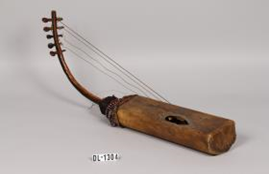 DL 1304 - Bogenharfe / Bow Harp
DL 1304 - Bogenharfe / Bow Harp
 “African Harps, particularly arched or”bow" harps, are found in several Sub-Saharan African music traditions, particularly in the north-east. Used from early times in Africa, they resemble the form of harps in ancient Egypt with a vaulted body of wood, parchment faced, and a neck, perpendicular to the resonant face, on which the strings are wound." [Wikipedia]
“African Harps, particularly arched or”bow" harps, are found in several Sub-Saharan African music traditions, particularly in the north-east. Used from early times in Africa, they resemble the form of harps in ancient Egypt with a vaulted body of wood, parchment faced, and a neck, perpendicular to the resonant face, on which the strings are wound." [Wikipedia]
 [source: Encyclopedia Britannica, public domain]
[source: Encyclopedia Britannica, public domain]
“Eastern Nuer on the Ethio-South Sudanese border adopted the instrument from a similar instrument called the adungu from the Acholi and Alur in Uganda.”
https://sbmusicology.com/instruments.html
Does the harp yearn to be played?
How did it come into Max Freiherr Von Oppenheim’s hands?
How are these instruments crafted?
https://www.youtube.com/watch?v=1VX7QRliFIw&ab_channel=QangiQangiMusic
Eri Rama Putra (b.1987) familiar known as Eri who lives and works in Indonesia. Eri’s artistic practice is driven by his lens based practice and perspective while encounters with everyday life narratives. He likes to use intuition when observing objects or phenomena that he encounters in everyday life, and play the role or function of the medium. He has been exhibited his works in several exhibitions such as UNSEEN CO-OP, Amsterdam, the Netherlands; SongEun Art Space, Seoul, South Korea; and National Gallery of Indonesia, Jakarta, Indonesia. Currently, he is doing long research project about seaweed, community, and its narrative lingered around in Nusa Penida, Bali, Indonesia.
Through a Rautenstrauch-Joest Museum collection about Indonesian photography archives, shows various locations, activities, and stories from unidentified year and specific location. All the archives been circulated through a fellowship program titled Leaky Archives. As a curator, I am seeing this archives to redistribute to those who are living closer to the context. I am working with a photography editor to make a compilation of speculative fiction photobook and a group of researcher and curator to conduct a workshop in East Java–where some of the photos are located. Instead of defining the archive through the truth of archives, I would like to discuss what kind of speculative fiction that we could create from these archives. The fiction constructed by the myth, folklore, oral histories that lingered around the communities. On this case, fiction becomes a way to position that community narrative could be a matters to define their own histories instead of depend to the material archives which defined by the colonial.
Riksa Afiaty, a curator who are mostly working in the decolonization discourses within Indonesia. Especially the relation between Indonesia with Papua
Benny Widyo, a curator who is based in East Java and conducted a project to gather the local myth and community narratives in Tulungagung
Prasetya Yudha, a photobook publisher called SOKONG! which focuses on publishing the photobook based in Yogyakarta, Indonesia.
The second day of learning about archives and storytelling was presented by Riksa Afiaty, IVAA (Indonesia Visual Art Archive) and Agnisa Wisesa, State University of Malang. Riksa talked about the role of archives and artworks in the propaganda agenda concerning Papua. In addition, Riksa also invited discussion on how archives should be used to compile history for those who have not been heard or recorded.
In the second session, Agni discussed the collaboration that should be created between on-campus and off-campus academics. In archival work, there are interests of authorities over the archives and knowledge that circulate. Therefore, Agni emphasized that institutions should be more open to collaborating with archival practitioners who grow rooted in the context of archives and social issues surrounding archives.
On the first day, there were two learning sessions led by Benny Widyo, Gulung Tukar and Prasetya Yudha, SOKONG! In the first session, Benny talked about his Residency project with Ella Chedburn, Somerset, UK entitled The Trees and The Wires. This project talks about the archives and myths that shape the history of Tulungagung. Another emphasis in this project is about the effort to combine archives, myths, legends to become one narrative about the history of Tulungagung.
In the second session, Prasetya Yudha (Pras) from SOKONG! Publish told about several editorial projects of photographic archives that they did. Pras also mentioned the importance of connecting personal experiences with archives and social phenomena. This session also discussed a lot about ethical responsibility in the work of creating narratives through archives, one of which is about the responsibility of knowledge that is created and will be distributed across generations.
| Inventarnummer: | DL 316 |
| Andere Nummer: | |
| Titel: | Bronzekopf (ori-olokun) |
| Künstler/Beteiligte: | |
| Herkunft: | West-Afrika |
| Datierung: | ca. 1980 |
| Material/Technik: | Material: Technik: |
| Maße: | Objektmaß: H 558 x B 165 x T/L 230 mm Gewicht: 7638 g |
| Standort: | Dauerausstellung |
| Zugangsart: | |
| Erwerb durch: | |
| Erwerb von: | |
| Erwerbungsjahr: | |
| Erwerbnotiz: | |
| Beschreibung: | |
| Notizen: | |
| Literatur: | |
Bilder
NAME: ORI-OLOKUN (Head of Olokun) [The Divinity of The Ocean]
ORIGIN: WEST AFRICA (NIGERIA)
CULTURE: EDO/YORUBA
OVERVIEW:
Deities, better known as Orisha (or Orisa) in the Yoruba language, are supernatural entities, who work in tandem with Olodumare, the divine and supreme entity in the Yoruba cosmology/ spirituality in checking that the natural laws are well kept.
Olokun is therefore a deity in Yoruba cosmology/spirituality, who manifests itself through water. It is the deity with the absolute authority over water, sea, ocean, etc. Water is naturally, one of the four revered elements across most African cosmological systems, the other three being fire, earth and wind. It serves as a panacea for purification, healing and regeneration. It is also used in communicating to the supreme deity, in cases of extreme need.
The Ocean or sea, which is the abode of Olokun is notably, the source of all wealth in Yoruba cosmology.
FUNCTIONS OF OLOKUN:
The Olokun occupies a prominent place in the pantheon of Yoruba divinities. It is the sustainer of sea life, and an abode of wealth and protection for all adherents who genuinely seek its favor. In being a purifying element, Water enables Olokun to have a great hold in solving grave matters for believers and adherents.
Those who are her devotees are also favored with gift of children.
The Olokun Festival
Annually celebrated amongst the Yoruba people, domiciled in African communities and the diaspora is the Olokun Festival. It is held to celebrate the wealth, prosperity and abundance, which are the gifts the great and benevolent deity bequeaths on its adherents.
For the indigenous Yoruba people of Nigeria, the festival is celebrated in the ancient city of Ile-Ife, situated in the southwestern state of Osun, Nigeria. Ile-Ife is notably the cradle of Yoruba civilization and spirituality, with the Ooni, who is a direct descendent of the Oduduwa (the divine ancestor of the Yoruba people) as its spiritual head.
The Olokun festival is held to commemorate the bond that exists between the living and the ancestors (deities). Led by the spiritual leader, the Ooni, adherents hold a procession on the D-day to a river, sea or beach, to enable participants make their offerings and prayers to the sea divinity.
/The Olokun Festival/media/image1.jpg)
/The Olokun Festival/media/image2.jpeg)
/The Olokun Festival/media/image3.jpeg)
/The Olokun Festival/media/image4.jpeg)
Picture 1 is a post made on the Ooni’s Facebook page in commemoration of the Olokun festival
Pictures 2 – 4 taken during the recent Olokun Festival held in the month of May 2022, at Ile-Ife. Cc: Ooni Adeyeye Enitan Ogunwusi – Ojájá II
Red arrow shows the 51st and current traditional ruler and spiritual leader of the Yoruba kingdom of Ile-Ife; Ooni Adeyeye Enitan Ogunwusi – Ojájá II, also known as Ooni of Ife; performing acts of spiritual cleansing.
DL 237 [Double figure Ogboni]
ORIGINAL NAME: Edan Ogboni/ Edan Osugbo
ORIGIN/CULTURE: Yoruba, Nigeria, West Africa
FEATURES/DESCRIPTION
Heads of a male and female figure, mounted on a staff
Made of brass/iron, with fragments of clay
Figures bound by a chain, attached to the head
Between 4-10 inches in length.
The Edan Ogboni is the symbol of the Ogboni society. The Ogboni society is an indigenous spiritual, judicial and political group of the Yoruba. They are made up of titled nobilities within the Yoruba community. They function largely as observers of the King (Oba), by checking the king’s extremes and ensuring that the people are governed through the divine laws. The Ogboni society are the guardians and protectors of the land. Through their ardent veneration of the earth goddess, Ile or Odudua (the mother of life), and her blessings, they are able to exert judgment on persons within the community, who are involved in criminal and abominable offences.
Headed by the Oluwo (Master of mysteries and esoteric knowledge) the Ogboni also perform religious functions such as serving as the mouthpiece of Oracles. They also function as intermediaries between the living and divinities.
The Edan Ogboni represents a pair of Ogboni initiates, male and female, both bound by a metal chain attached around their neck. The metal chain made of brass – an element of hardness and workability, signifies the longevity, well-being and immortality of the society. The unification of both figures expresses the intent of the Ogboni society to ensure procreation and continuity of life, through the energy of the earth goddess, Ile.
During their meetings, the members of the society wear the Edan around their necks for proper identification. New initiates are also made to take an oath with the Edan to uphold the secrecy and sacredness of the society.
DL 303 [Bambara Figure]
ORIGINAL NAME: Tyi Wara, Ci’wara (Chi Wara)
CULTURE: Bambara (Bambana) peoples (originally first known as
ORIGIN: Mandé ethnic group in Mali, Guinea, Burkina Faso and Senegal (West Africa)
FEATURES/DESCRIPTION
Vertical head
Elongated face
Made of wood
Long horns
Facial markings
OVERVIEW
The spiritual realities and cultural practices of the Bambara people trails from their cosmology and mythology. At the helm of all visible and invisible being is the supreme being and creator of all things, Bemba. Below this supreme being are the divinities and ancestors. The ancestors are mostly either human beings, or a combination of human and divine being, who lived a worthy, noble and exemplary life while on earth. The Bambara peoples believe that upon the earthly death of these good men and women of the community, they naturally transcend to the ethereal world, where the become the living dead (Ancestors), residing directly with the creator.
Ancestors are thus, giving a strong veneration, as they grant easy access to the creator. For the people of Bambara, Tyi wara is one of such revered ancestors from the community, whose earthly deeds, inspired a boisterous agricultural atmosphere in the community.
It is believed that Tyi wara was a mythical being, comprising of both divine and human characteristics. Upon descending from the sun goddess and settling in the ancient Bambara kingdom, he started the noble art of farming; going ahead to teach the Bambara people how to till the land and grow food. This occupation expanded their wealth and notability within neighboring communities.
Later on, the Bambara people in honoring this important ancestor formed a spiritual and socio-economic society named after him. Initiates are adepts in the skill of farming, who have also (by their deeds in the community) marked themselves out as noble and righteous men. This society represents their founding ancestor ‘Tyi Wara’ with a sculpted headdress, with the features of an antelope, aardvark, and pangolin.
Each of these animals bear a significant feature of the abilities Tyi wara possessed while on earth.
The antelope represents the speed, endurance and energy of Tyi wara. On headdress the horn of the antelope is shown.
The curved figure of the pangolin with its prominent scales signifies the Tyi wara adeptness in tilling and digging. Pangolins are notable for
While the aardvark possesses a good digging skill, it’s long nose, ears and tongue (as shown on the headdress) is used for catching preys.
Periodically, members of the Tyi wara society perform ritualistic ceremonies in keeping alive the memories and antecedents of Tyi wara. Young male skilled dancers, wear the animalistic headdress over long raffia costume and perform dances. Women also join in the reverie, by singing songs of praise for their undaunting hard work
Till date, the Bambara people still pride themselves in subsistence farming; this being their major and most dedicated occupation.

Title: The Ivory Tusk of the Benin Kingdom: A Sacred Object of Spiritual Significance
Introduction: The ivory tusk of the Benin Kingdom is a sacred object of great spiritual significance. It is believed to have been created during the 19th century in what is now present-day Nigeria, and has been passed down through generations as a symbol of cultural and religious identity. In this presentation, we will explore the history, symbolism, and spiritual significance of the ivory tusk of the Benin Kingdom.
History: The Benin Kingdom was a powerful kingdom in West Africa during the 19th century, known for its sophisticated political and artistic traditions. Ivory carving was an important artistic tradition in the Benin Kingdom, and the ivory tusk was a symbol of the king's authority and power. The ivory tusk was often used in royal ceremonies and was considered a sacred object, imbued with spiritual significance.
Symbolism: The ivory tusk of the Benin Kingdom is rich in symbolism, with intricate carvings depicting scenes from the kingdom's history and mythology. The tusk is often decorated with images of animals, such as leopards or elephants, which represent the king's power and authority. The carvings on the tusk also depict important events in the kingdom's history, such as battles or royal ceremonies.
Spiritual Significance: The ivory tusk of the Benin Kingdom is a sacred object with great spiritual significance. It is believed to contain the spirits of the ancestors and is used in traditional religious practices to honor and communicate with the spirits. The tusk is often used in ceremonies such as weddings, funerals, and other important events, and is considered a symbol of cultural and religious identity.
Preservation and Conservation: The ivory tusk of the Benin Kingdom is a valuable cultural and historical artifact, and efforts have been made to preserve and conserve it for future generations. The tusk is now housed in museums and art galleries around the world, and there have been ongoing efforts to return the tusk to its place of origin in Nigeria.
Additionally, conservation efforts have been put in place to protect the tusk from damage or decay.
Conclusion: The ivory tusk of the Benin Kingdom is a sacred object of great spiritual significance, with a rich history and complex symbolism. It is a symbol of cultural and religious identity and continues to be used in traditional religious practices. Efforts to preserve and conserve the tusk for future generations have been ongoing, and it remains an important cultural artifact that represents the history and traditions of the Benin Kingdom.

DL 233 (Goli Mask)
ORIGIN: Wan people of Cote d’ Ivoire, West Africa
CULTURE: Baule or Baoulé or Bawule
ORIGINAL NAME: Goli Glin (Ancestral Spirit)
 |
|
|---|---|
| Inventory Number: | RJM 61862 |
| Title: | Buffalo mask |
| Artist/Participant: | Bwa; cultural attribution; questionable |


| Inventarnummer: | DL 316 |
| Andere Nummer: | |
| Titel: | Bronzekopf (ori-olokun) |
| Künstler/Beteiligte: | |
| Herkunft: | West-Afrika |
| Datierung: | ca. 1980 |
| Material/Technik: | Material: Technik: |
| Maße: | Objektmaß: H 558 x B 165 x T/L 230 mm Gewicht: 7638 g |
| Standort: | Dauerausstellung |
| Zugangsart: | |
| Erwerb durch: | |
| Erwerb von: | |
| Erwerbungsjahr: | |
| Erwerbnotiz: | |
| Beschreibung: | |
| Notizen: | |
| Literatur: | |
Bilder
NAME: ORI-OLOKUN (Head of Olokun) [The Divinity of The Ocean]
ORIGIN: WEST AFRICA (NIGERIA)
CULTURE: EDO/YORUBA
OVERVIEW:
Deities, better known as Orisha (or Orisa) in the Yoruba language, are supernatural entities, who work in tandem with Olodumare, the divine and supreme entity in the Yoruba cosmology/ spirituality in checking that the natural laws are well kept.
Olokun is therefore a deity in Yoruba cosmology/spirituality, who manifests itself through water. It is the deity with the absolute authority over water, sea, ocean, etc. Water is naturally, one of the four revered elements across most African cosmological systems, the other three being fire, earth and wind. It serves as a panacea for purification, healing and regeneration. It is also used in communicating to the supreme deity, in cases of extreme need.
The Ocean or sea, which is the abode of Olokun is notably, the source of all wealth in Yoruba cosmology.
FUNCTIONS OF OLOKUN:
The Olokun occupies a prominent place in the pantheon of Yoruba divinities. It is the sustainer of sea life, and an abode of wealth and protection for all adherents who genuinely seek its favor. In being a purifying element, Water enables Olokun to have a great hold in solving grave matters for believers and adherents.
Those who are her devotees are also favored with gift of children.
NAME: OKPU AGỤ (LEOPARD CAP)
ORIGIN: EKPE LEOPARD SOCIETY
CULTURE: IGBO/EFIK/IBIBIO (NIGERIA)
OVERVIEW:
The Okpuagu dates as far back as the early 18th century. The Ekpe (Leopard) secret society, a locally-formed institution of law enforcement and order, was the first to use it. Their functions ranges from checking the excesses of the ruling council, to credit bureaucracy, and most importantly, a spiritual cult of noble and wise individuals, bequeathed with the duty of preserving the most important knowledges of the community as passed down by ancestors.
It is almost impossible to gain a total understanding of African Indigenous Knowledges without an assessment of her secret societies. It is also worth noting that the term ‘secret’ can have different meanings in different contexts. While some practices may be hidden from the mainstream or require certain levels of initiation or knowledge, this does not necessarily make them malicious or sinister. In many cases, this secrecy is simply a way to protect the privacy and safety of practitioners or to preserve and protect the integrity of certain teachings and traditions.
The Okpuagu, amongst many other things is one of the regalia used in identifying members of this society. As time passed, other secret societies within the region also started using this cap, as a means of identification. One of such groups who made this gear highly symbolic is the Nze na Ozo society.
Just like the Ekpe society, the Nze na Ozo is the highest socio-religious group in the Igbo society, who are strongly and solely responsible for shaping the social structures, norms, and values in a community. They also serve as a governing body that mediates between the living and the dead (ancestors). Members are chosen by divinities because of their fostered wisdom, decency and uprightness.
The members of this society wear a special regalia, amongst which is the Okpuagu. It should be emphasized that only members of the higher Ozo level of the Nze na Ozo society are the ones allowed to wear the Okpuagu. Although members of the lower Nze level occupy a significant position in the society, they are not entitled to wear it.
This cap can also be adorned with eagle feathers and this really depends on one’s level of seniority in the society. Overall, for the members of the Nze na Ozo society, the Okpuagu serves as a symbol of authority and prestige, it is what announces their identity in public.
/RJM 61808 OKPUAGU/media/image1.jpeg) |
|
| Inventory Number: | RJM 61808 |
| Other number: | |
| Title: | Cap |
| Artist/Participant: | Yoruba; Cultural attribution |
| Provenance: | Nigeria |
| Date: | |
| Material/Technique: | |
| Dimensions: | "Object dimensions: H 390 x W 200 x D/L 55 mm Weight: 110 g" |
| Location: | |
| Acquisition manner: | |
| Acquisition through: | |
| Acquisition by: | |
| Year of acquisition: | |
| Acquisition note: | |
| Description: | |
| Notes: | |
| Literature: | |
Weitere Bilder
| Bild | /RJM 61808 OKPUAGU/media/image1.jpeg) |
/OKPUAGU VIDEO.mp4.jpg)
Title: Mami Wata: A Deity and Goddess of African Mythology
Introduction: Mami Wata is a deity and goddess in African mythology with significant cultural and religious significance. She is revered by many people across West Africa and is known for her power, beauty, and influence. In this presentation, we will explore the origins, mythology, symbolism, and cultural significance of Mami Wata, as well as discuss different interpretations and debates surrounding her meaning and symbolism.
Origins: Mami Wata's origins can be traced back to West Africa, where she is believed to have originated in the coastal regions. She is often associated with water and is said to reside in the ocean or other bodies of water. Mami Wata is also associated with serpents, which are often depicted as coiled around her body. She is seen as a powerful and influential figure in African mythology and is often worshipped in traditional religious practices.
Mythology and Symbolism: Mami Wata is known for her beauty and her physical appearance is often depicted as a mermaid or a woman with a fish tail. She is also often depicted wearing jewellery or carrying objects such as a mirror or comb. In African mythology, Mami Wata is associated with wealth, beauty, and power, and is often worshipped as a goddess of fertility, love, and protection. She is also believed to have the power to heal and bring good luck.
Cultural Significance: Mami Wata has had a significant impact on African art, literature, and popular culture. Her image has been depicted in various forms of media, including music, film, and literature. In many West African countries, Mami Wata is still worshipped as a deity and her image is often used in traditional religious practices. She has also become a symbol of African identity and pride, and her image has been used in political and social movements.
Interpretations and Debates: There are various interpretations and debates surrounding the meaning and symbolism of Mami Wata
Some argue that Mami Wata is a symbol of female empowerment and that her image has been appropriated by feminist movements. Others argue that Mami Wata's image has been distorted by Western cultural influences and that her original meaning and symbolism has been lost.
Conclusion: Mami Wata is a significant figure in African mythology and has had a profound impact on African art, literature, and popular culture. Her image has been appropriated in various ways, and there are ongoing debates surrounding the meaning and symbolism of Mami Wata. However, she remains an important symbol of African identity and pride and continues to be worshipped as a deity in many African countries.
Suggestions for Future Research: Further research on Mami Wata could explore her influence on contemporary African art and literature, as well as her role in modern African religions. Additionally, more research could be done on the ways in which Mami Wata's image has been appropriated and used in non-African contexts, and the impact this has had on her original meaning and symbolism. Research could also explore the ways in which Mami Wata's image has been used to challenge dominant cultural narratives about race, gender, and power.
 |
|
| Inventory Number: | RJM 62104 |
| Other number: | |
| Title: | Mami |
| Artist/Participant: | Igbo |
| Provenance: | "Provenance (index card): Origin (location book): Nigeria" |
| Date: | |
| Material/Technique: | |
| Dimensions: | "Object dimensions: H 472 x W 240 x D/L 212 mm Weight: 456 g" |
| Location: | |
| Acquisition manner: | |
| Acquisition through: | |
| Acquisition by: | |
| Year of acquisition: | |
| Acquisition note: | |
| Description: | |
| Notes: | Comparative literature: Wendl, Tobias. ' Mami Wata or a Cult between Cultures.' Kulturanthropologische Studien vol. 19. Münster 1991. |
| Literature: | |
| Add. p. 38-45 |
Weitere Bilder
| Bild |  |
| Bild |  |
| Bild |  |
| Bild |  |

DL 234 [Kurumba Antelope]
ORIGINAL NAME: Adoné (Kurumba Mask)
CULTURE: Aribinda, Toulfe, Djibo regions of the Kurumba People
ORIGIN: Kurumba, Burkina Faso, West Africa
FEATURES/DESCRIPTION:
Slender and long neck, horn and snout
Surface adorned with red beads
Long sharp ears
Brownish-red or kaolin pigments used on surface
OVERVIEW
The Kurumba Mask, rightly known as Adoné, by the Kurumba people of Burkina Faso is a physical embodiment of an ancestral spirit (deceased kin). Ancestors represent a very important focus in African cosmological system. There is a consensual belief in the eternal existence of souls of people who have rightly attained the status of an ancestor upon death. Some of the requirement for the attainment of ancestorship includes; Old age, a noble and upright life, progenies etc.
One who reaches this feat, naturally joins the realm of the ancestral spirits upon death and are afterward treated with great reverence. They act as intermediaries between the living and the divinities. Families remember these spirits by periodic veneration and thanksgiving. They do this in order to keep them alive in the spiritual realm, while also intentionally engaging them to influence their earthly activities for good.
For the people of Kurumba, the Adoné mask, which is a natural antelope headdress; worn over the head by masqueraders, represents the spirit of a deceased elder. It acts as a totem and/or point of contact for the remembrance and veneration of the dead. Libations, sacrifices and prayers are offered to the Adoné, by family members to preserve good relationship with the departed kin.

DL 233 (Goli Mask)
ORIGIN: Wan people of Cote d’ Ivoire, West Africa
CULTURE: Baule or Baoulé or Bawule
ORIGINAL NAME: Goli Glin (Ancestral Spirit)
 |
|
|---|---|
| Inventory Number: | RJM 61862 |
| Title: | Buffalo mask |
| Artist/Participant: | Bwa; cultural attribution; questionable |

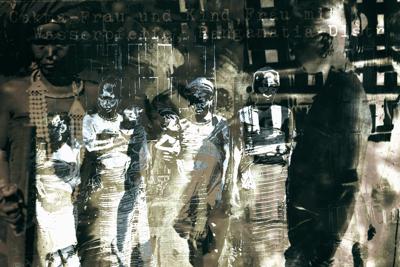





























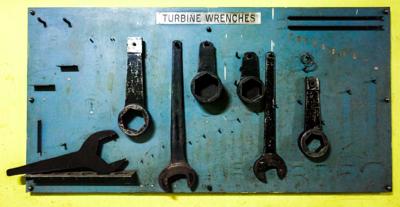



















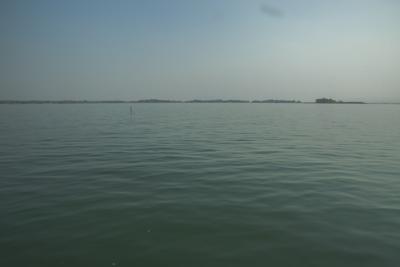











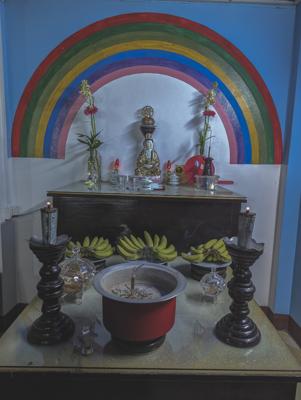























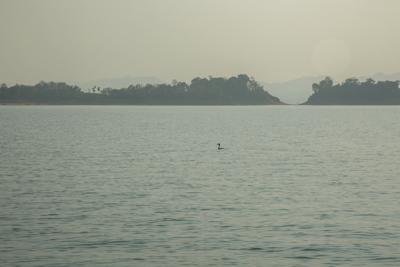













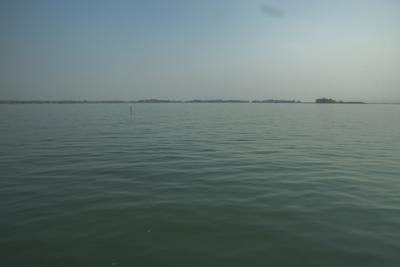














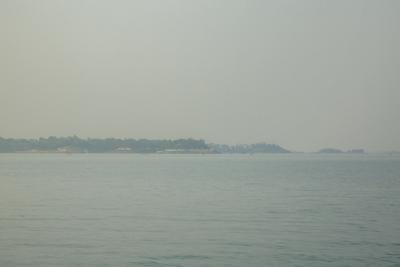


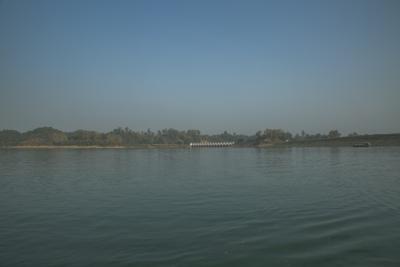






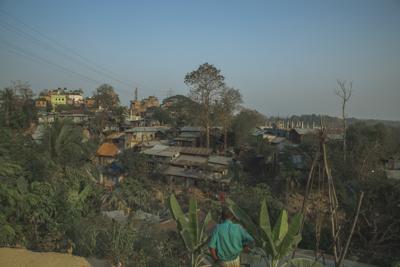


























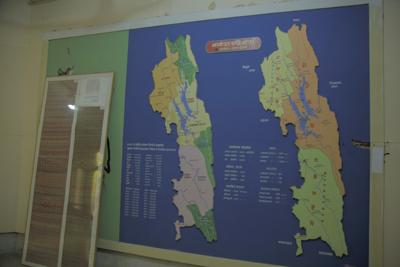




















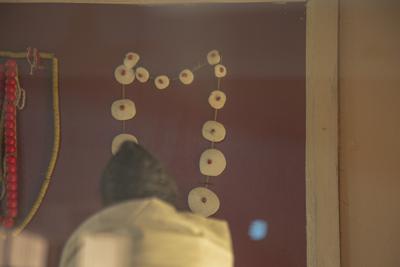







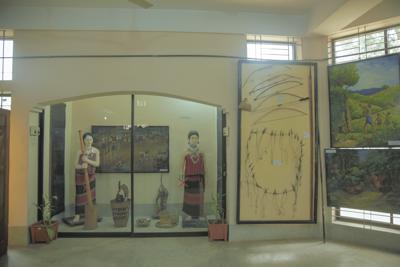










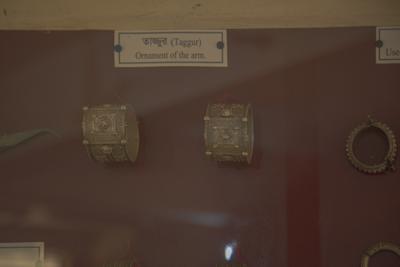




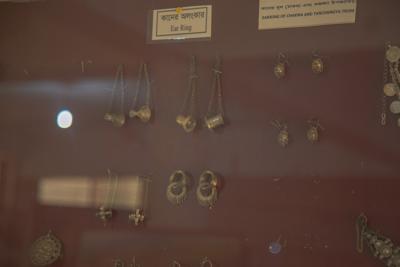




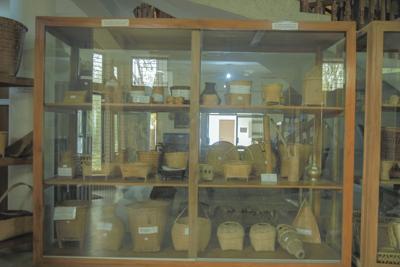
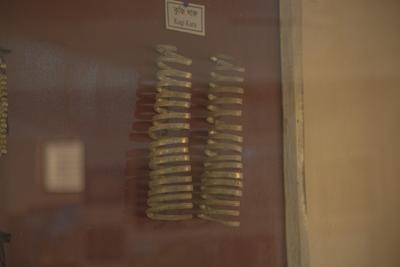


























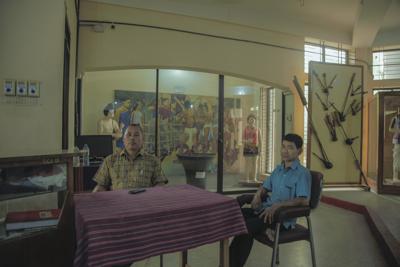






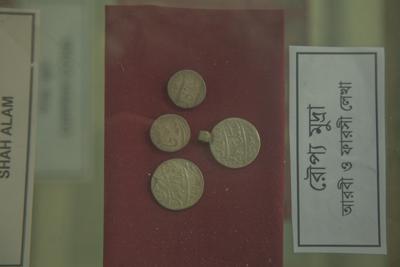

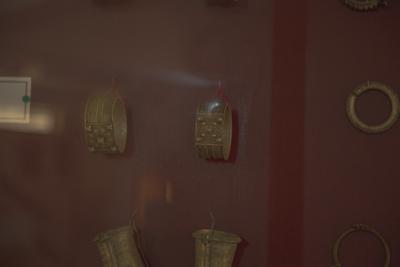

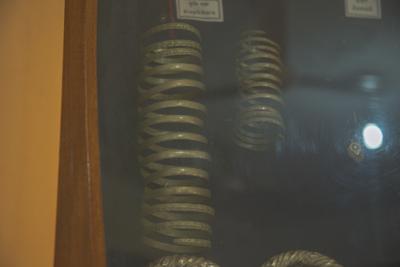
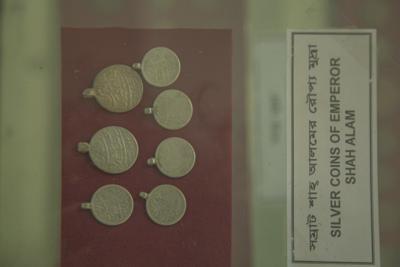































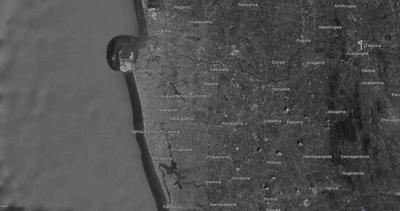






















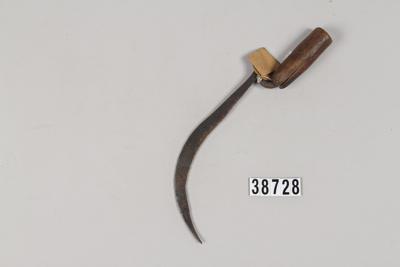






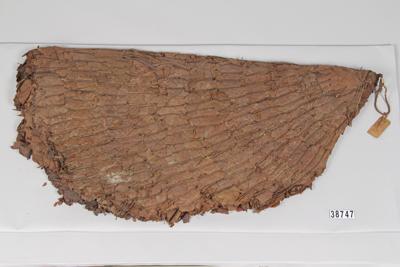













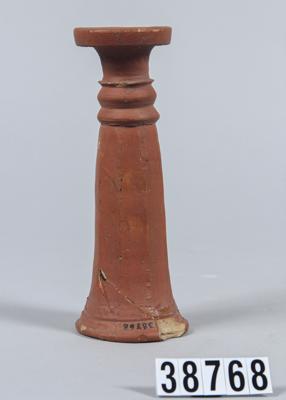








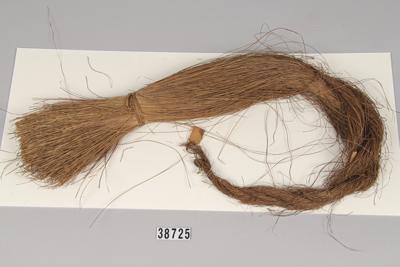













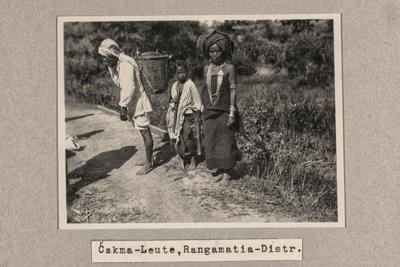


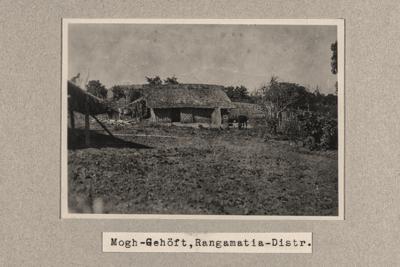



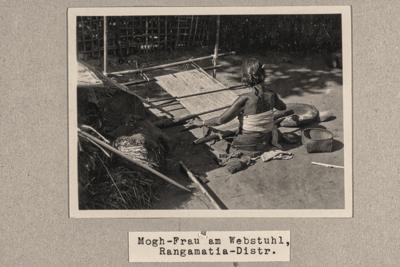
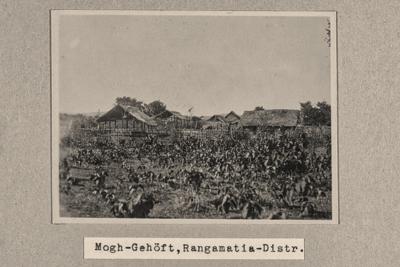

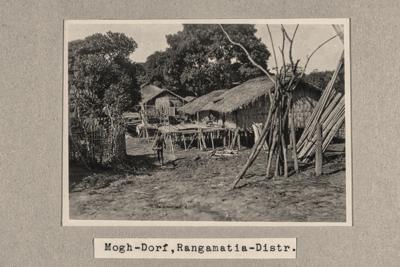








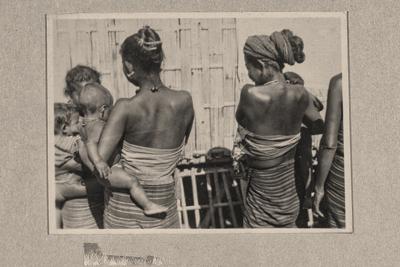






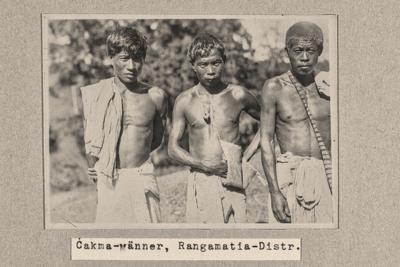

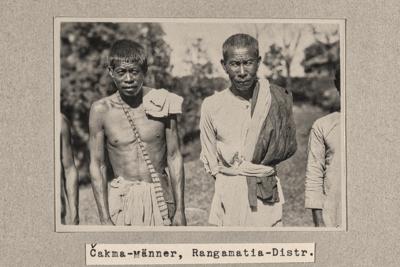











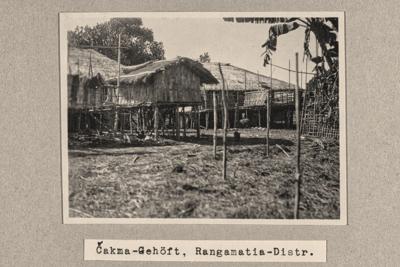
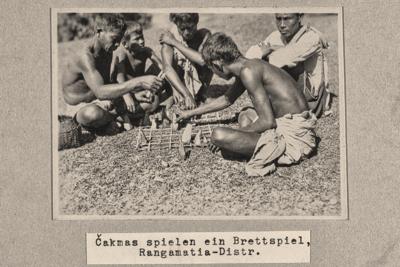
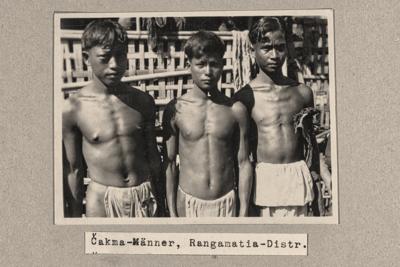





















































































.pdf.jpg)





.pdf.jpg)


.pdf.jpg)
 (2010).pdf.jpg)
 Enrique Salmón - Eating the Landscape_ American Indian Stories of Food, Identity, and Resilience-University of Arizona Press (2012).pdf.jpg)
 Elora Halim Chowdhury and Liz Philipose (eds.) - Dissident Friendships_ Feminism, Imperialism, and Transnational Solidarity-University of Illinois Press (2016).pdf.jpg)

.pdf.jpg)
 (2004).pdf.jpg)
.pdf.jpg)
 - libgen.li.pdf.jpg)
 Meghna Guhathakurta and Willem van Schendel - The Bangladesh Reader_ History, Culture, Politics-Duke University Press (2013).pdf.jpg)
.pdf.jpg)
. Vol. I-University of Michigan (2003).pdf.jpg)
.pdf.jpg)
.pdf.jpg)
]_(BookZZ.org).pdf.jpg)


] Radhika Govindrajan - Animal Intimacies _ Interspecies Relatedness in India’s Central Himalayas (2018, The University of Chicago Press) - libgen.lc.pdf.jpg)
.pdf.jpg)
.pdf.jpg)
.pdf.jpg)

 Arup K. Sarma, Vijay P. Singh, Rajib K. Bhattacharjya, Suresh A. Kartha - Urban Ecology, Water Quality and Climate Change-Springer International Publishing (2.pdf.jpg)




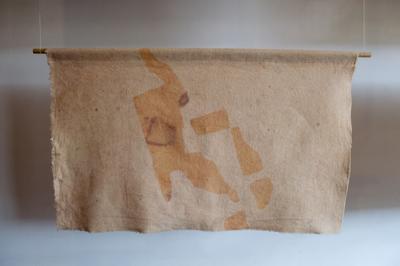
















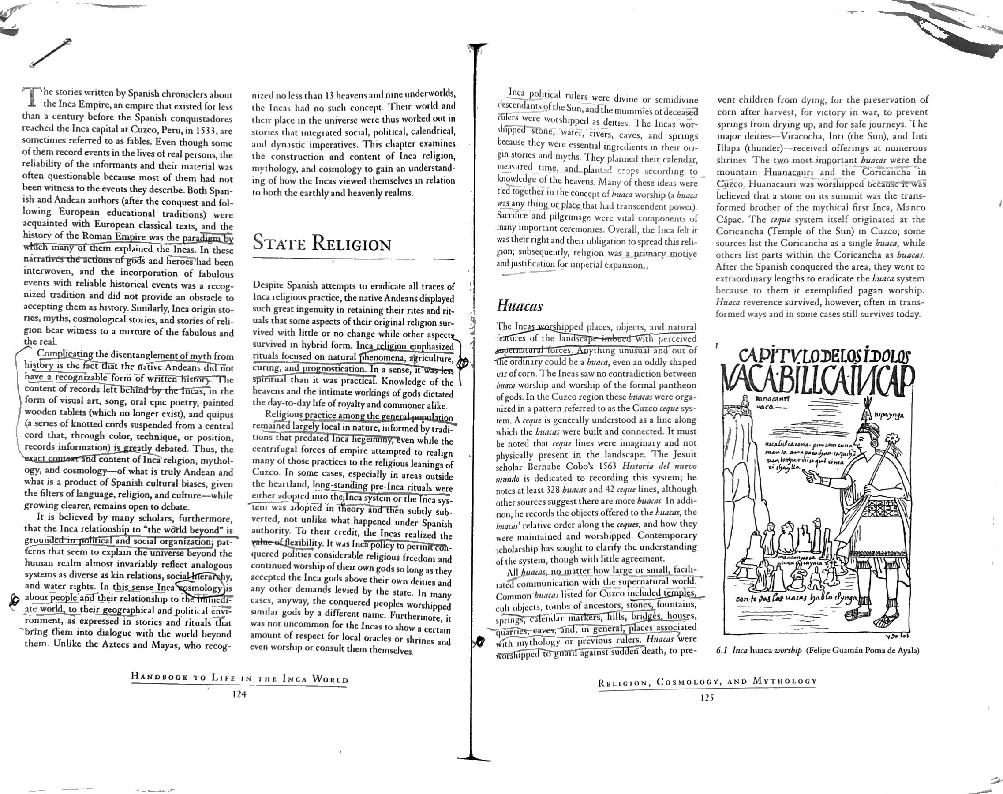
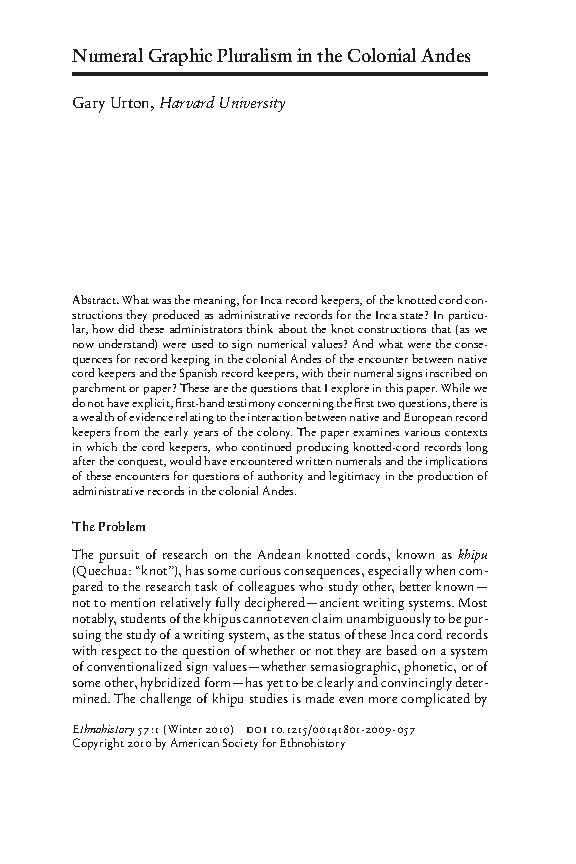

















.png)
.png)

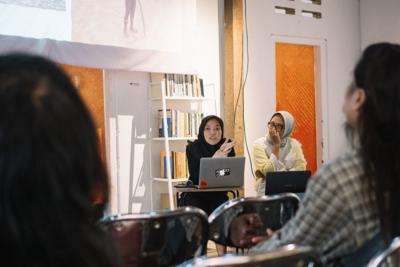









/THE OBALUFON MASK.pdf.jpg)
/22-09-29 13-41-10 2128.png)
/22-09-29 13-37-51 2127.png)
/22-09-29 13-44-17 2130.png)
/22-09-29 13-41-21 2129.png)
/22-09-29 13-44-52 2132.png)
/22-09-29 13-45-04 2133.png)
/22-10-05 05-49-45 2142.png)
/22-09-29 13-44-37 2131.png)
/316_1.JPG)
/22-09-16 16-11-36 2116.jpg)
/22-09-15 16-05-21 2113.jpg)
/22-09-29 14-01-14 2137.png)
/22-09-29 13-59-52 2135.jpg)
/22-09-29 14-06-57 2139.png)
/The current Ooni of Ife wielding a staff with Ori-Olokun/22-09-29 14-12-24 2140.jpg)
/The current Ooni of Ife wielding a staff with Ori-Olokun/IMG-2143.JPG)
/The current Ooni of Ife wielding a staff with Ori-Olokun/22-09-29 14-06-54 2138.jpg)
/22-09-15 16-05-29 2114.jpg)
/22-09-29 13-52-52 2134.jpg)
 - The Igbo Intellectual Tradition_ Creative Conflict in African and African Diasporic Thought-Palgrave Macmillan US (2013).pdf.jpg)








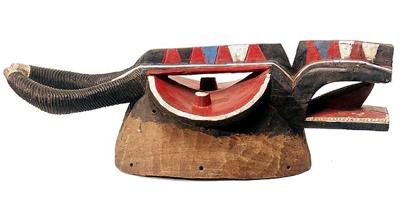




.pdf.jpg)

.pdf.jpg)


